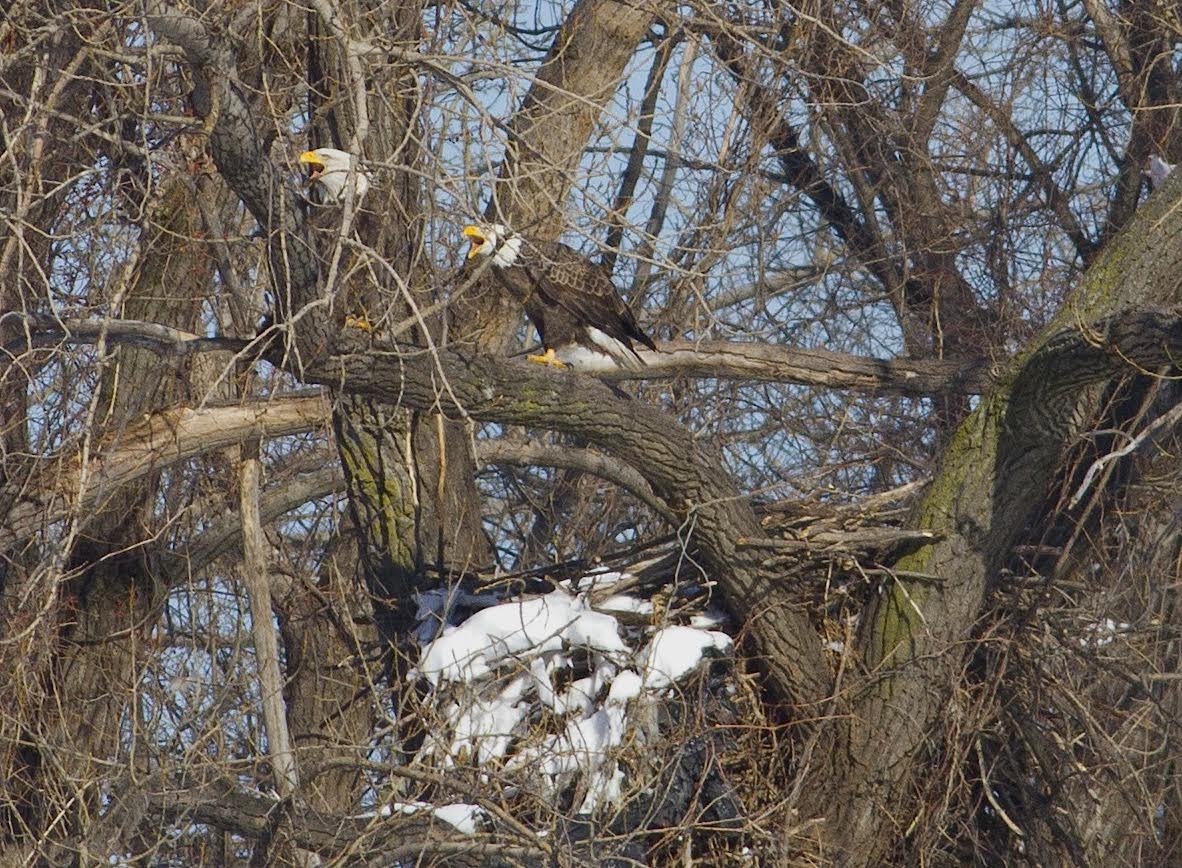About an hour before I sat down to write this week’s column, I was standing on the banks of the Overpeck in Ridgefield watching a pair of nesting Bald Eagles preparing to once again bring forth the next generation of the nation’s symbol into the world .
A truly magnificent thing to see, but one I never dreamed I would ever be able to witness , especially here in one of the most densely populated places in the nation. Yet they are here , back from the brink of extinction for everyone to see and witness. The Bald Eagle has returned.
But there is more good news for the Bald Eagle population, not only in our area but all over the Garden State. The State Division of Fish and Wildlife’s Endangered and Nongame Species Program reported 191 nest sites throughout the state in 2015, an incredible comeback, especially when you consider that in the 1970s many people expected the symbol of our country to be extinct in the lower 48 states.
Out of 150 nest sites that had known outcomes, they produced 199 young, including a foster chick from Maryland that was fledged from New Jersey. Locally, this means Eagles now have nests in places like Wanaque, Woodcliff Lake and Oradell and other unlikely, heavily populated areas, such as Kearny and, of course, Ridgefield Park, a true success story unparalleled in bringing a species back from the brink.
Many generations have passed in our time without having the privilege of watching a Bald Eagle grace the skies of our state. Never did I dare dream that in my lifetime I would see This magnificent bird returning in these numbers to New Jersey, and I couldn’t have even imagined that it would be nesting right here so close to where I have grown up and still live. It gives me goose bumps just saying those words. But we must always remember that the Eagle did not return on its own, it did not come back by accident, or because we simply wished it so. We need to always recall how the Eagle managed its incredible comeback and how we got from one pair of birds in the 1980s to where we are now.
The eventual recovery of The Bald Eagle began in 1962 with Rachel Carson’s book, “Silent Spring,” which documented the overuse of DDT and its harmful effects on people, animals and especially birds. While there were great attempts to publicly discredit and personally humiliate Carson, “Silent Spring” led to the ban of DDT in 1972 and to what we now call the modern Environmental movement.
Next, two landmark pieces of legislation, The Clean Water Act in 1972 and the Endangered Species Act in 1973, gave government agencies and conservation groups the money and encouragement to bring the Bald Eagle back. None of this would have been accomplished without public outcry and the will of the average citizen.
I often wonder what would happen if we were at that point in history now. Would we be up to the challenge? Could we muster enough personal and political determination to again accomplish something as great as the return of the Bald Eagle? Or would we sit back and say we as Americans can’t do these great things any longer?
We don’t have the money. Government is too big or any other excuses some folks may come up with to keep us from doing what needs to be done. Today we even are faced with elected with officials who tell us we need to turn the clocks back and do away with the Endangered Species Act and the Clean Water Act.
The Bald Eagle has returned, and we should take some time to reflect and congratulate ourselves, but we should also look at this as the beginning of the story, not an ending. We can use the victory of the symbol of our nation here in New Jersey to give us the resolve to accomplish much, much more.
There is still land that needs to be preserved, wild creatures that need to be saved and an environment that still needs clean water and air that we can we safely drink and breath. We can do this. The recovery of the Bald Eagle proves that is so.
The Eagle is back, and now it is everyone’s job to be ever vigilant so we can make sure it stays here for future generations to enjoy.


Pingback: The Eagles | naturesurrounds